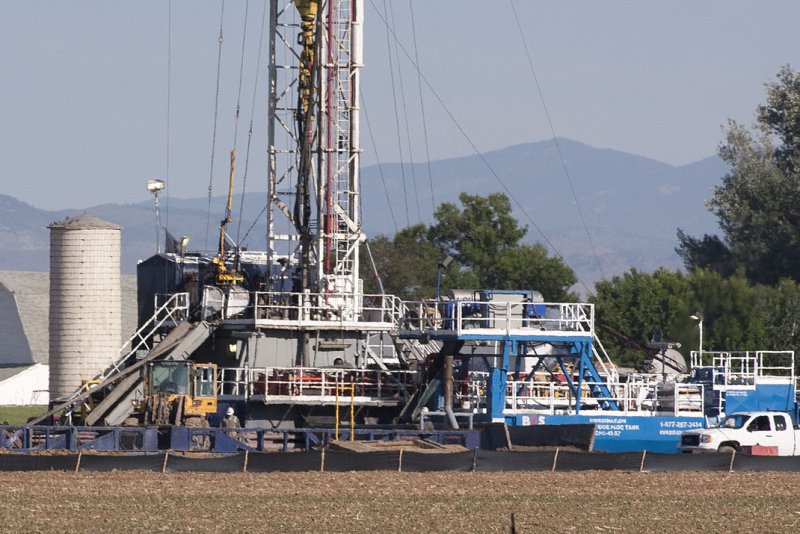Production and export trends in the United States are influencing global energy trade patterns, the International Energy Agency finds. File photo by Gary C. Caskey/UPI |
License Photo
Feb. 13 (UPI) -- A second wave of U.S. shale oil production, now a major exporter, means trade patterns are shifting to, not from, the Middle East, the IEA said.
The International Energy Agency said that supply-side strains are easing considerably. At this point last year, the global crude oil inventory sat at 264 million barrels above the five-year average and now that was close to 50 million barrels of overhang.
Strong global demand and an effort by the Organization of Petroleum Exporting Countries, with help from Russia, to balance the market with production cuts are eating into the surplus. That's helped with crude oil price recovery, but also incentivized growth in U.S. shale oil production, where efficiency has improved along with market conditions.
"Meanwhile, new and revised data shows a modest tightening of the balance in the early part of 2018, but the main message remains unchanged from last month and it is very clear: in 2018, fast rising production in non-OPEC countries, led by the United States, is likely to grow by more than demand," the IEA's monthly market report read.
By the IEA's read, total U.S. crude oil production increased by 846,000 barrels per day in the three months ending in November. A recent average total production of 10 million barrels per day from the United States means it's producing more than Saudi Arabia and, by the end of the year, could be the world's largest oil producer, beating Russia, if the pace continues.
Trade patterns, meanwhile, are changing in part because of the 2015 end to a ban on U.S. crude oil exports, a ban imposed after the Arab oil embargo on the United States in the 1970s. For the week ending Feb. 2, total U.S. petroleum exports averaged 1.3 million barrels per day, more than double the level from the same week in 2017.
"Recently we read of a shipment of condensate from the United States to the United Arab Emirates," the IEA's report read. "Such a development would have seemed incredible a few years ago, now it looks like the shape of things to come."
OPEC economists in their monthly market report for February raised the forecast for supply from producers outside the group by 250,000 barrels per day and most of those new barrels will come from the United States.
Steady gains in crude oil prices since the middle of last year have stimulated U.S. crude oil production, not only in the U.S. shale oil sector, but also in the deep U.S. waters in the Gulf of Mexico.
By the second half of the year, however, OPEC said it expected total U.S. oil production to slow down or even stall.















